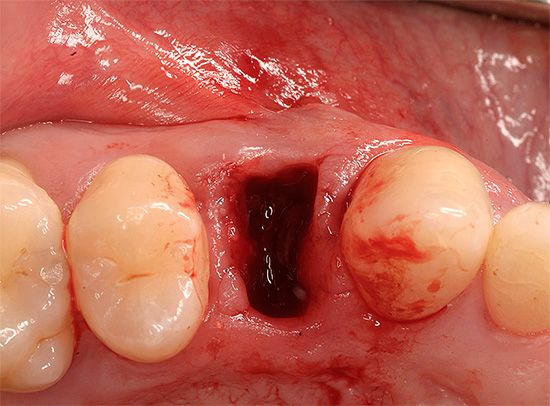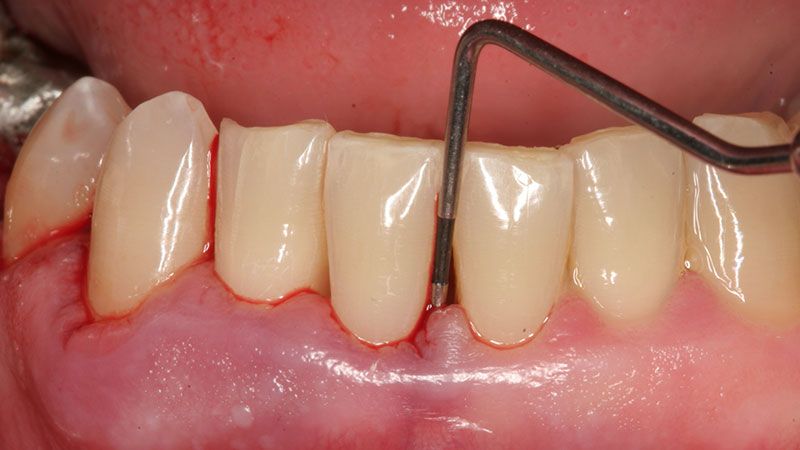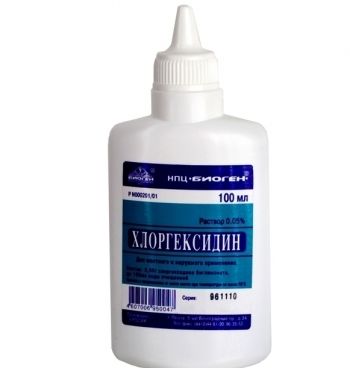7 (499) 519-30-24
Single number of the appointment to the doctor
Chlorhexidine mouthwash is an ideal antiseptic. In combination with other methods of dental treatment and with the correct dilution, it gives a good result. In pharmacies, chlorhexidine is sold without a prescription in a ready-made form and does not require dilution.
For rinsing the mouth, only an aqueous solution of chlorhexidine bigluconate 0.05% is used. There is a solution with a higher concentration - 0.1%, but it is not suitable for the prevention and treatment of dental diseases.
Due to its strong antiseptic properties, the solution can be used to treat various dental diseases of bacterial origin. Here is a list of indications for rinsing your mouth with chlorhexidine solution.
After tooth extraction
It is allowed to rinse only in three cases: the removal was carried out against the background of an inflammatory process, it was difficult or there are deposits of gray stone with caries in the patient's oral cavity, which can cause a suppuration of a blood clot. Rinsing is prescribed with a solution 2-3 times a day for at least 1 minute.
Active rinsing can lead to partial or complete leaching of the blood clot from the tooth socket, which is accompanied by the further development of the inflammatory process. This can be determined by the sudden pain in the area of the hole, which subside for a while, and then appear with renewed vigor.

Inflammation of the socket is called alveolitis (empty or dry socket). Necessarily to get advice and choose further treatment.
With inflammation of the dental hood
Most often, inflammation of the hood occurs over ... The mucous part of the gum, through which the tooth has not yet come out, is called the hood. Between him and the tooth, optimal conditions are created for the emergence and further development of a large number of microbes.
Pus may leak from under the hood - this also requires a visit to a doctor. You will be prescribed an antiseptic treatment with chlorhexidine mouthwash.
After opening the gum abscess
If a flux (abscess) was opened on the gum, a drain must be inserted into the incision to drain the pus. The active use of chlorhexidine mouthwash can lead to leaching of the drainage.
With bleeding gums
Bleeding and swelling of the gums is the main symptom of inflammation. The main causative agents of the problem are dental plaque and plaque. The first thing to take care of for patients with these symptoms is to remove them.... If this is not done, then even frequent use of chlorhexidine and other mouthwash formulations will be ineffective.
Bleeding gums can progress and lead to more serious problems, such as loose teeth. Dental plaque and stones are removed with ultrasound equipment, after which it is recommended to undergo a course of anti-inflammatory therapy.

The mouthwash course lasts 10 days. Not only chlorhexidine solution can be used, but also additional anti-inflammatory drugs such as "Cholisal-gel". An additional beneficial factor for the treatment of bleeding teeth may be toothpastes with chlorhexidine. Application is not recommended for more than 1 month.
With stomatitis
Treatment of herpetic stomatitis by rinsing the mouth with bigluconate is ineffective, since the components cannot fight the herpes virus.
In all other forms and manifestations of stomatitis, rinsing can be used. Miramistin solution will also be a good addition.
Contraindications for use
Prolonged use of the solution as a mouthwash leads to yellowish staining of the teeth and tongue. For the duration of the washing course, it is recommended to give up smoking and alcoholic beverages, coffee.
Many patients are concerned about whether the beauty of a smile is spoiled. Find out in this article. Folk remedies will help you quickly and painlessly cure gum disease, or as it is called.
Chlorhexidine mouthwash instructions
The solution, in its clinical and pharmacological group, belongs to antiseptic agents. Sold in pharmacies in plastic bottles of 100 ml. The composition contains:
- 100 ml of purified water;
- chlorhexidine bigluconate 0.05%.
It is used to treat diseases: alveolitis, periodontitis, stomatitis, gingivitis and in the postoperative period after tooth extraction. Allergy sufferers to the components of the solution may have side effects... Shelf life - 2 years at room temperature not higher than 25 degrees.

It is highly effective against bacteria, viruses and fungi. Not beneficial in patients with acid-resistant bacteria and spores.
Chlorhexidine gargle during pregnancy and children
The rinse course for pregnant and lactating women should not exceed 10 days. The conducted studies of the effect of the composition on the female body in the "position" did not reveal changes in the state of the fetus and milk.
There are no restrictions on the use as a mouthwash in children. Make sure that the child does not swallow the solution.





